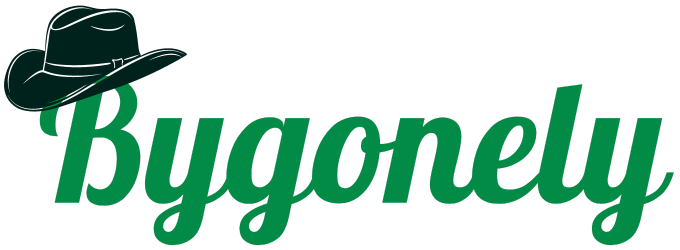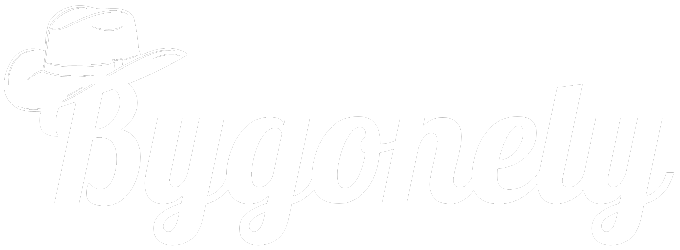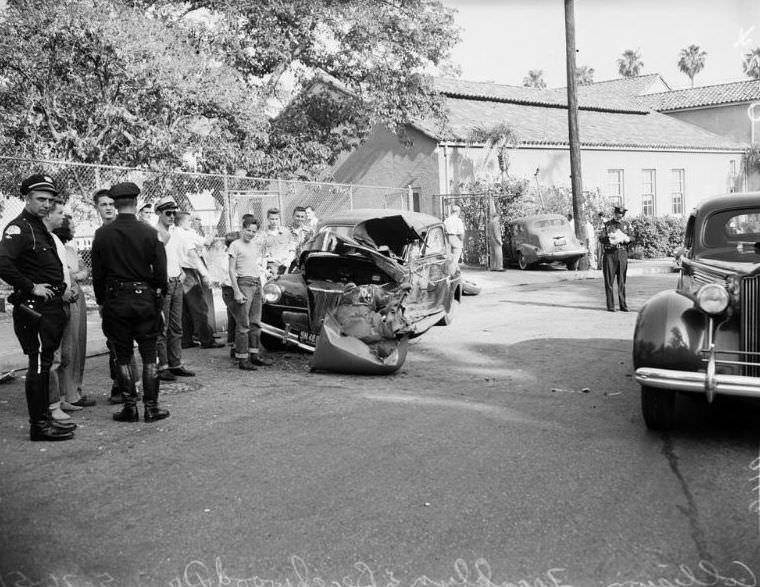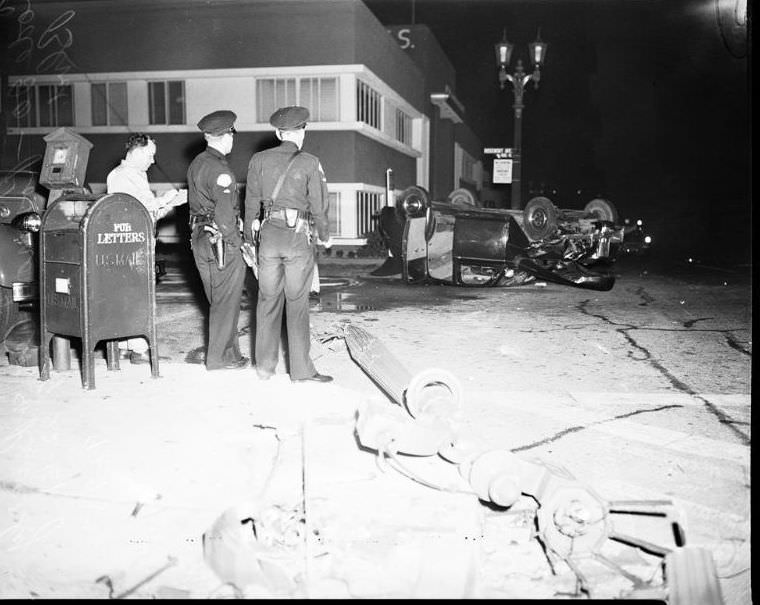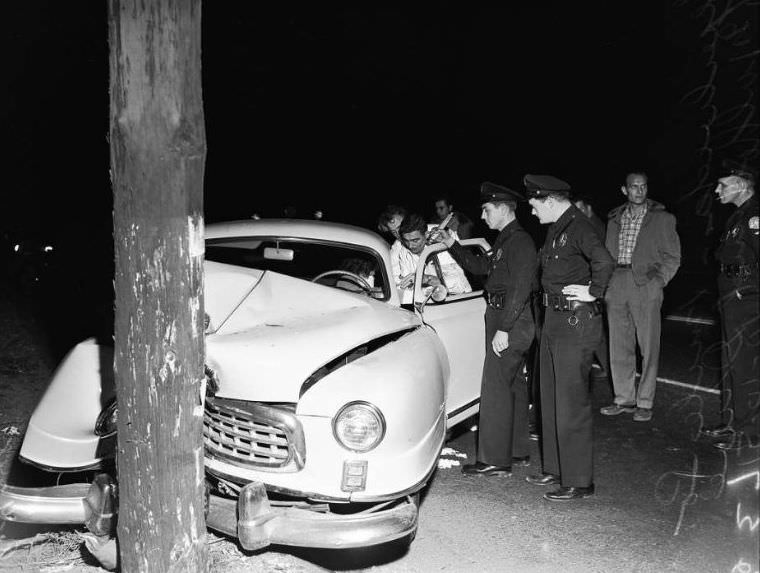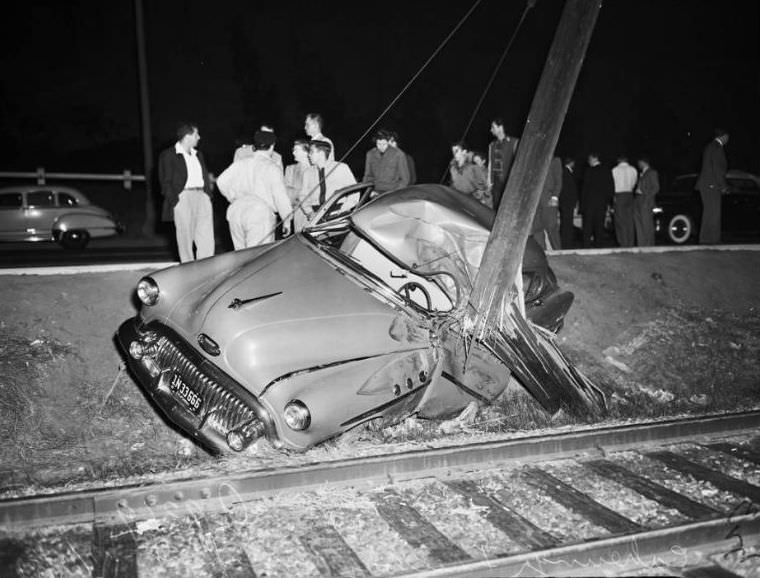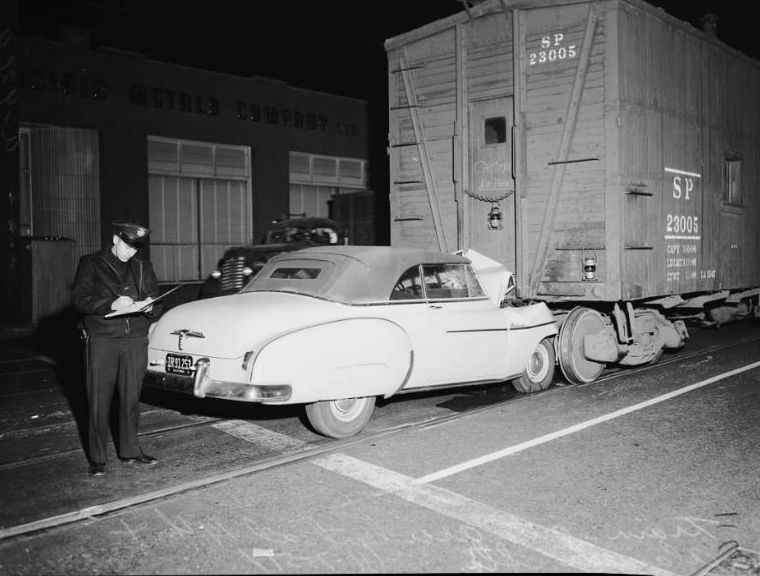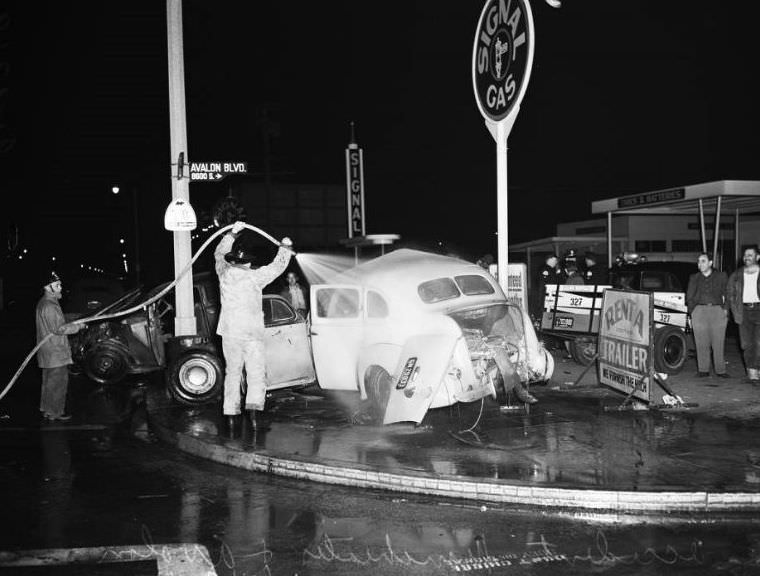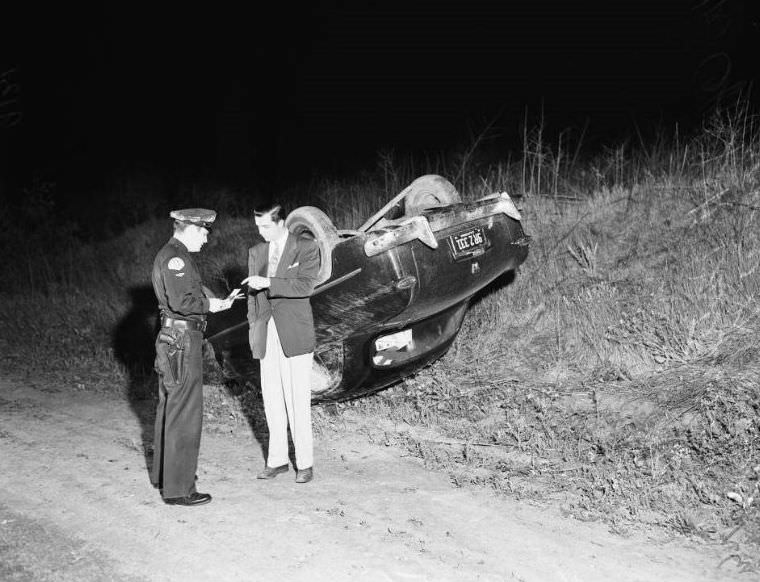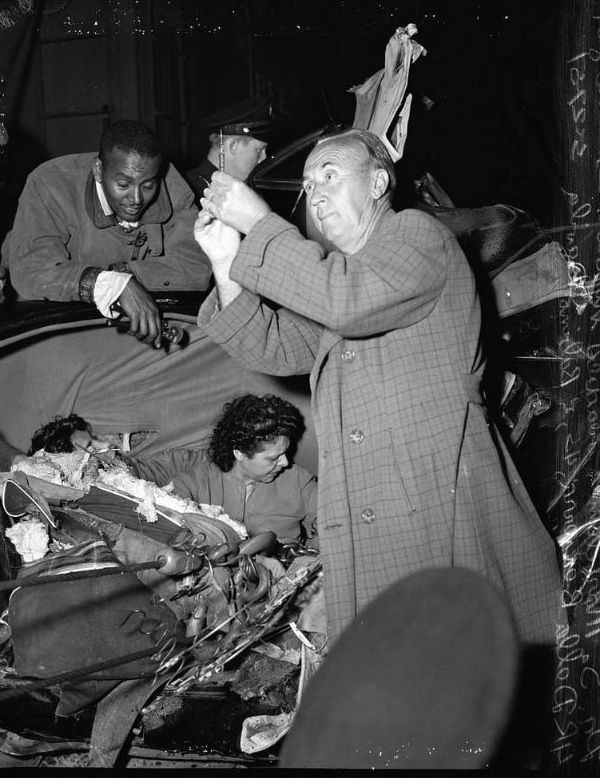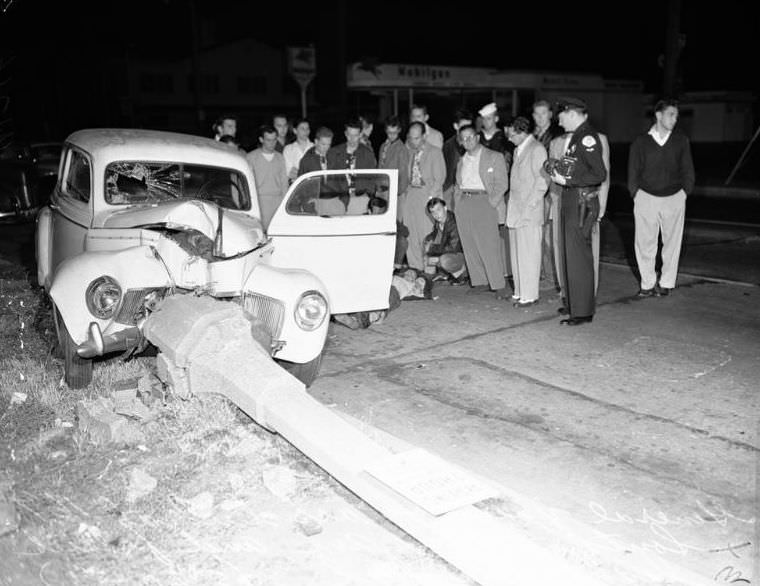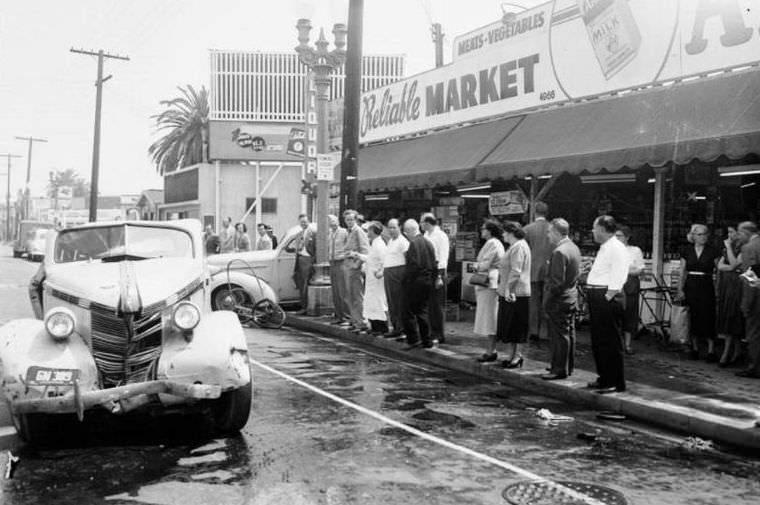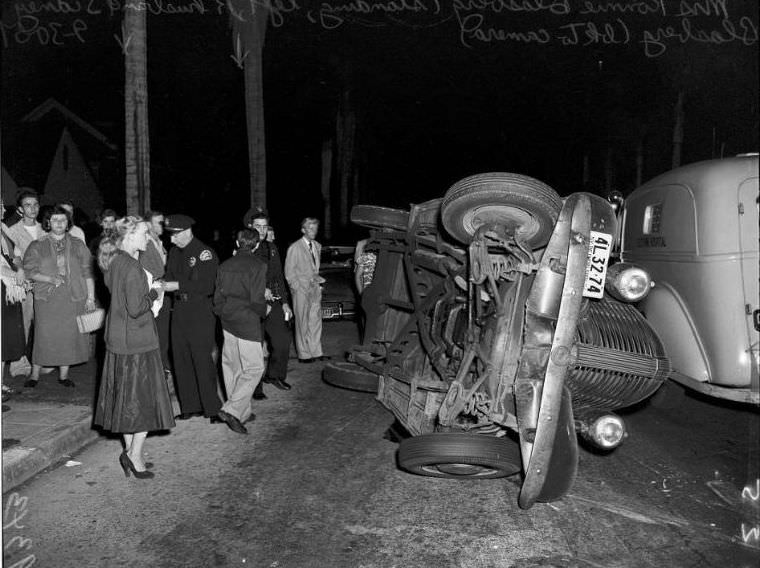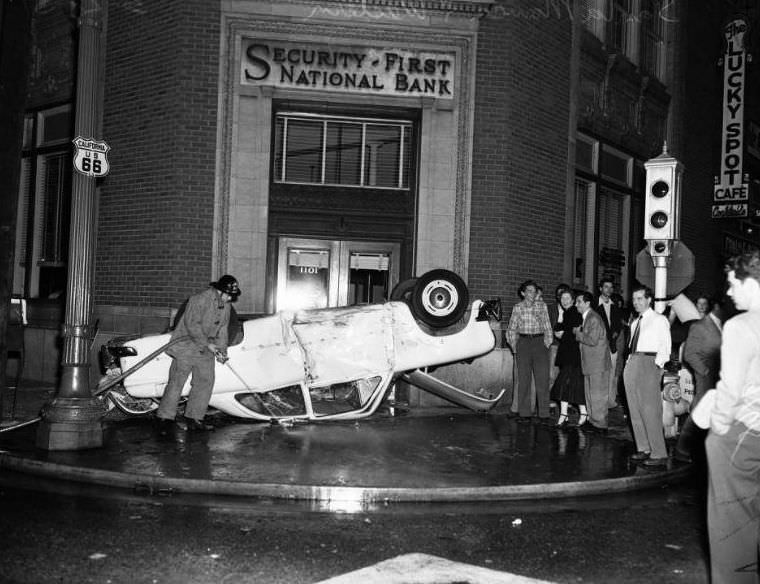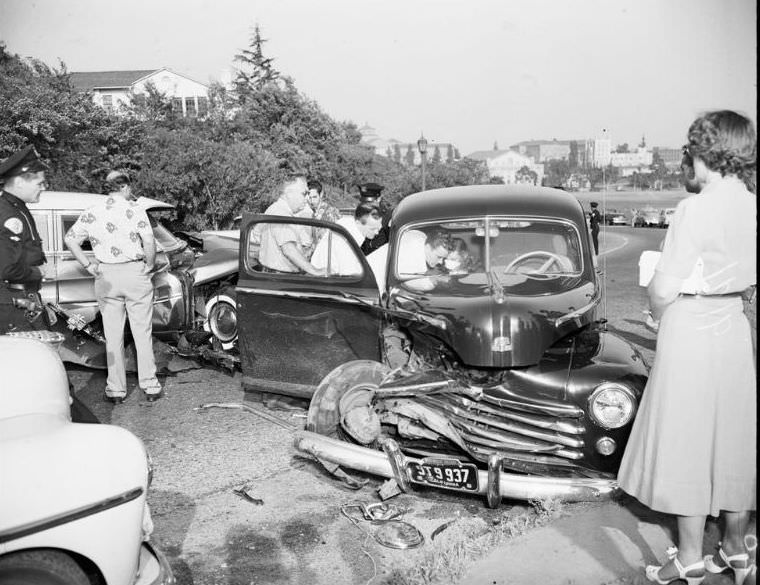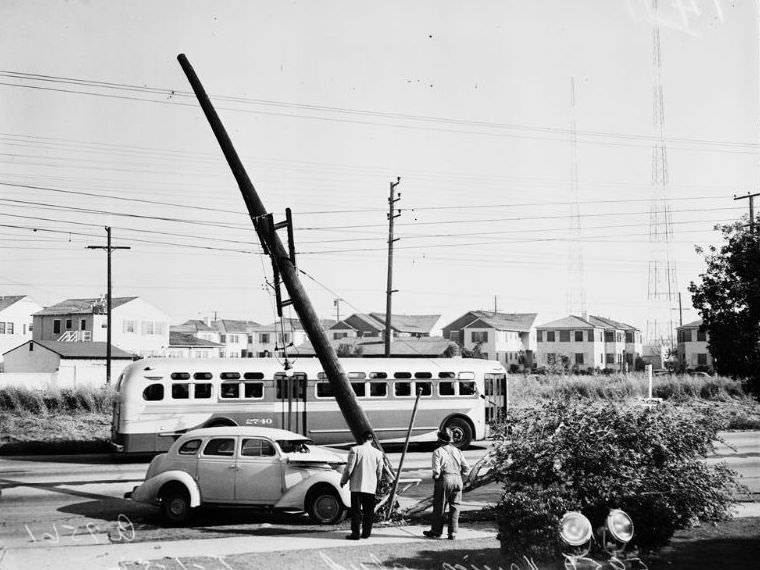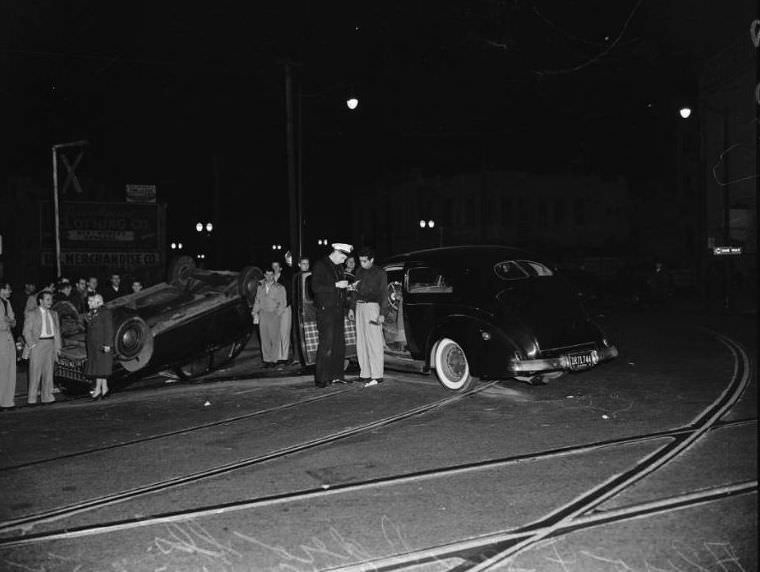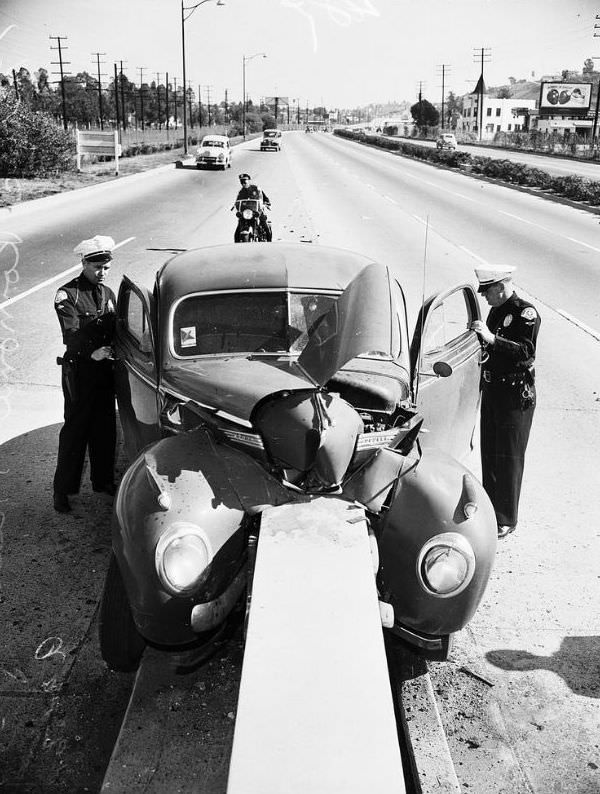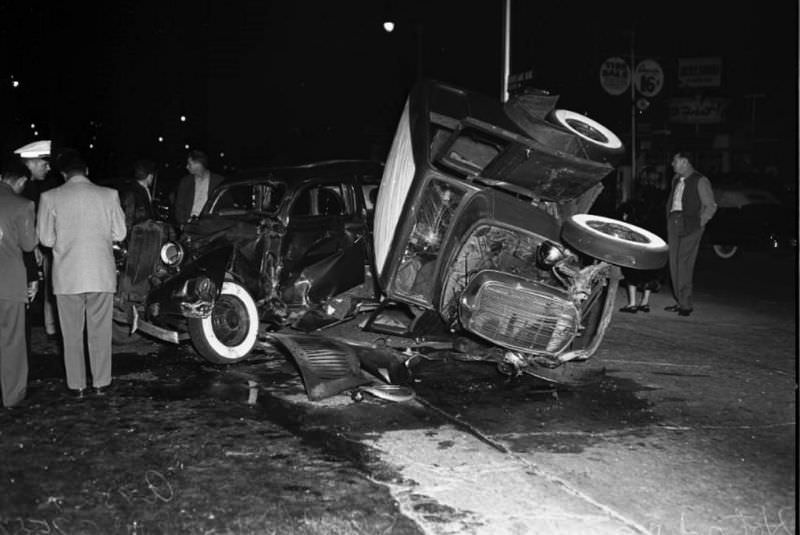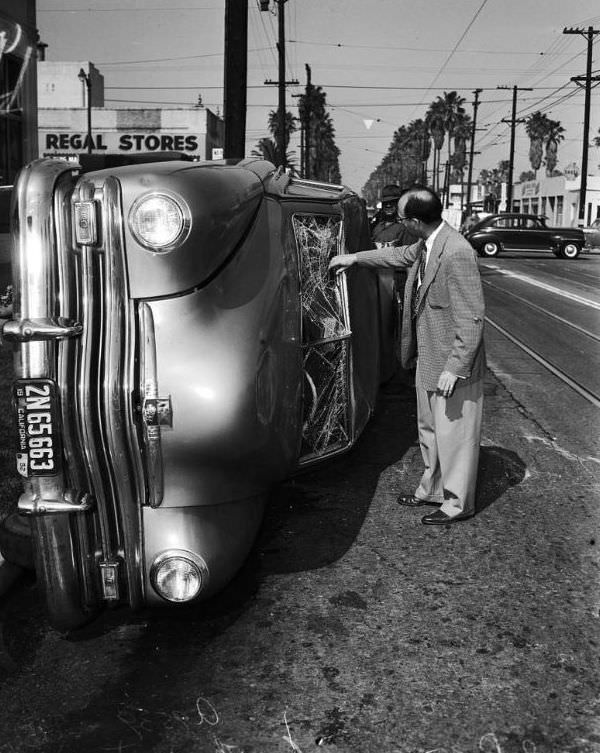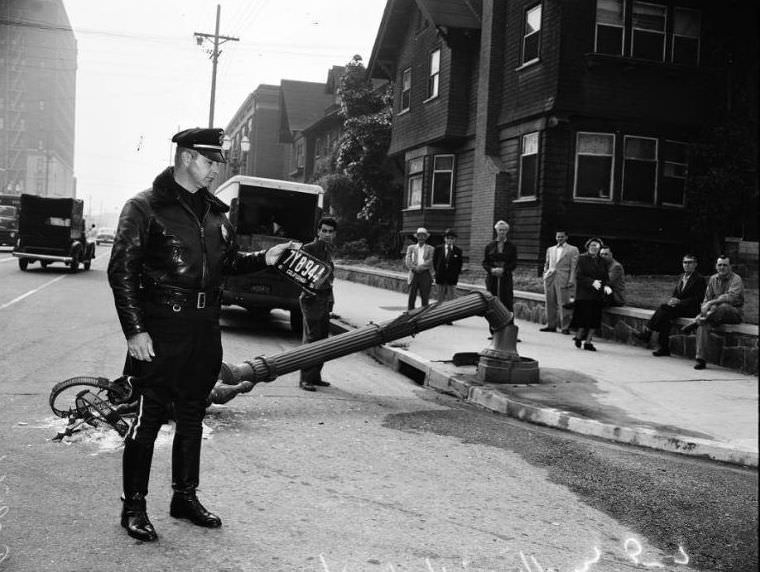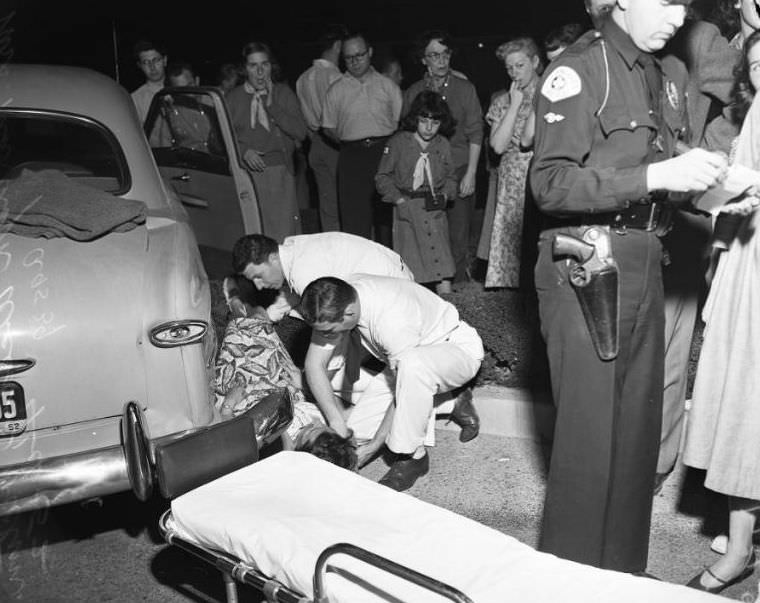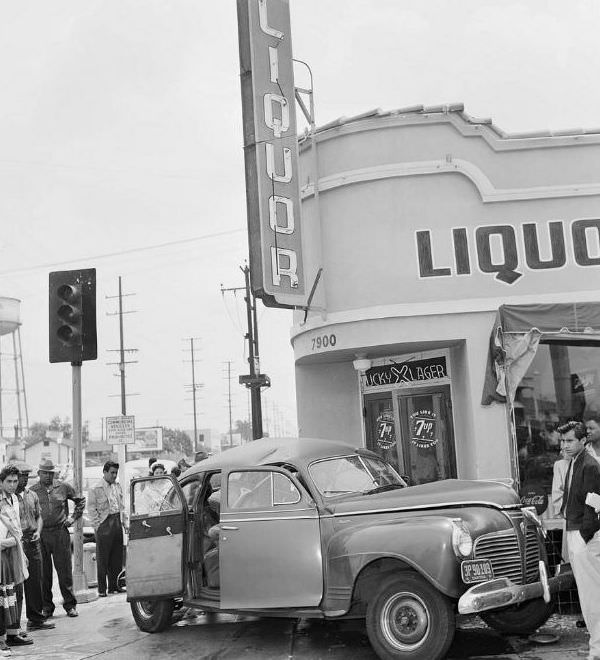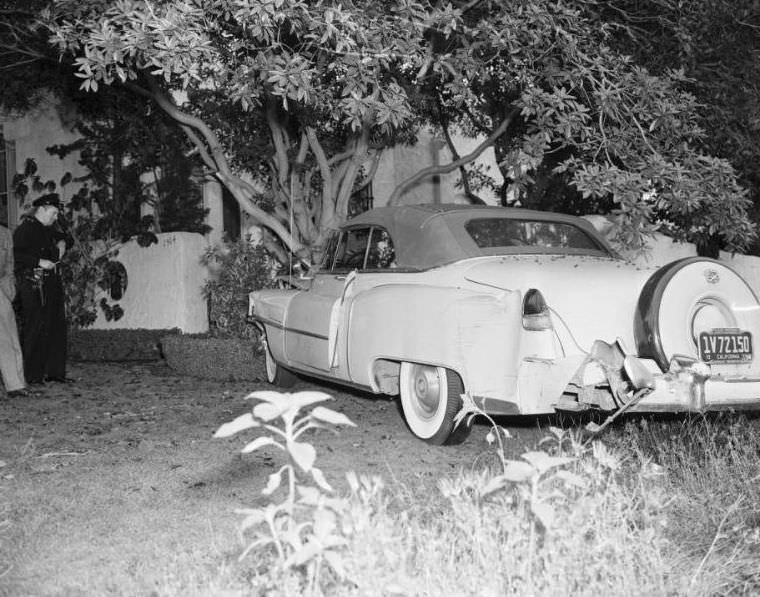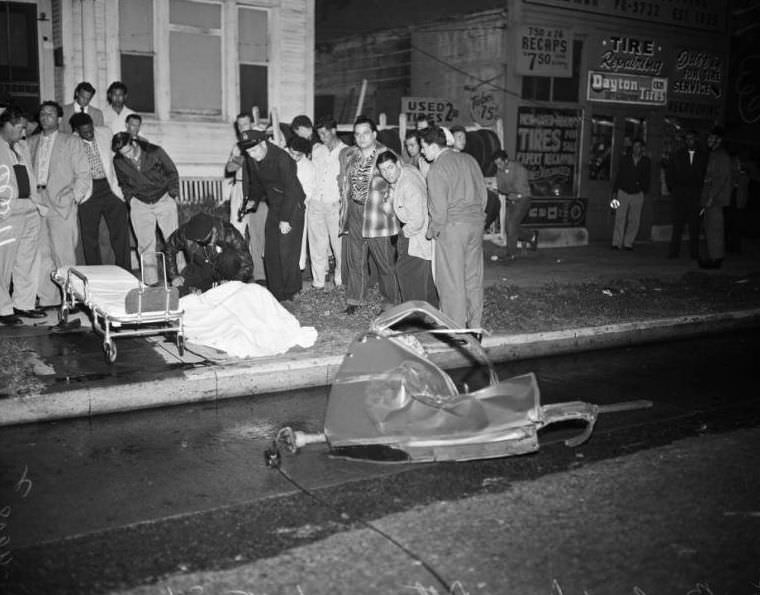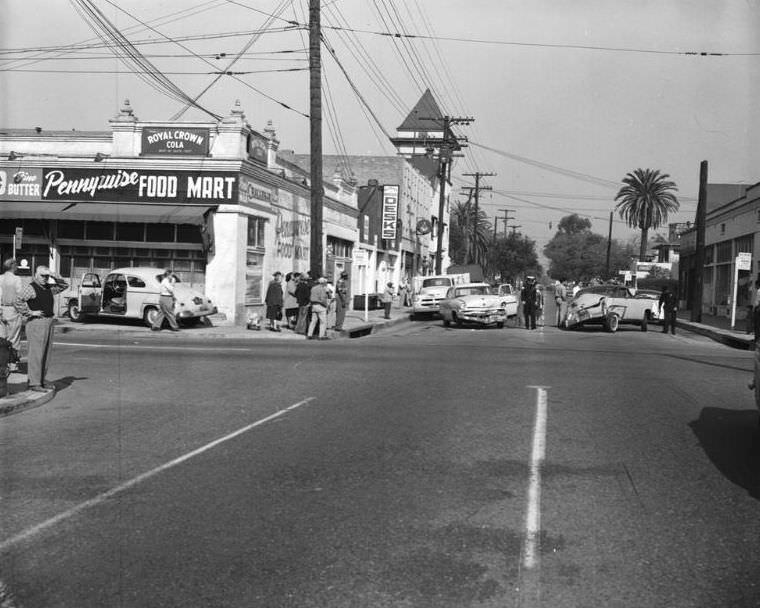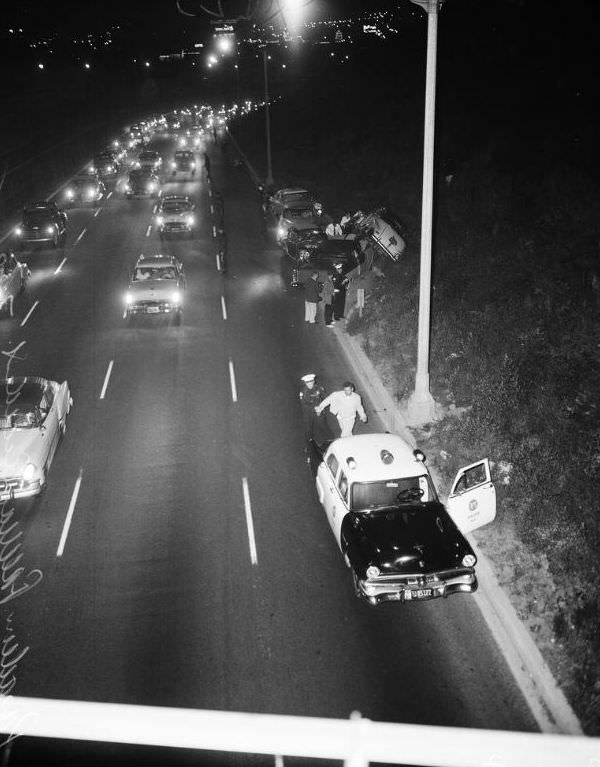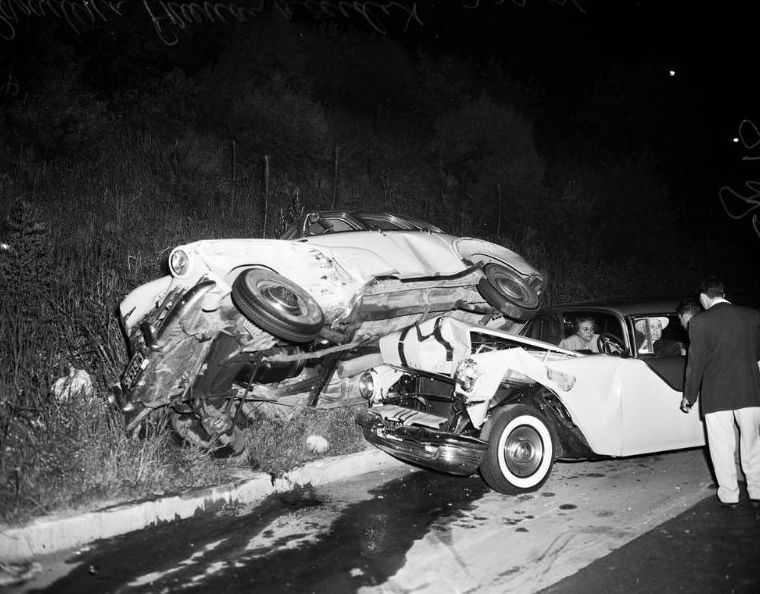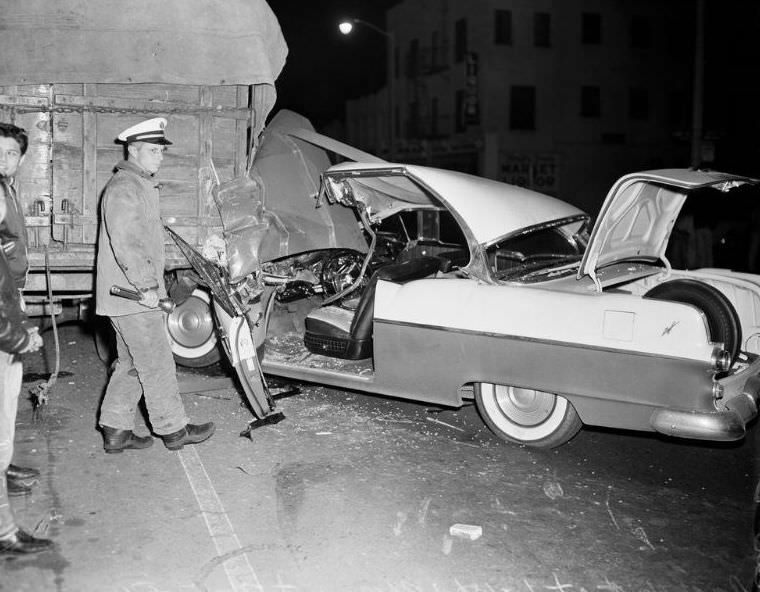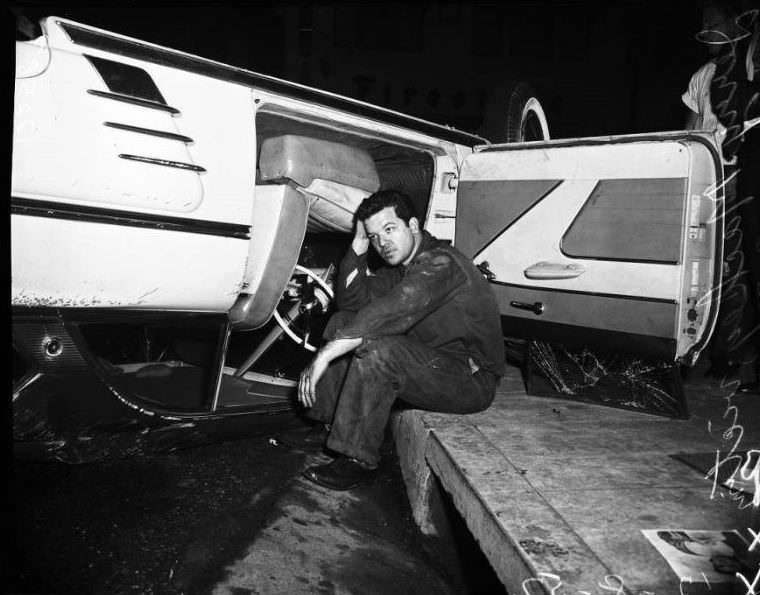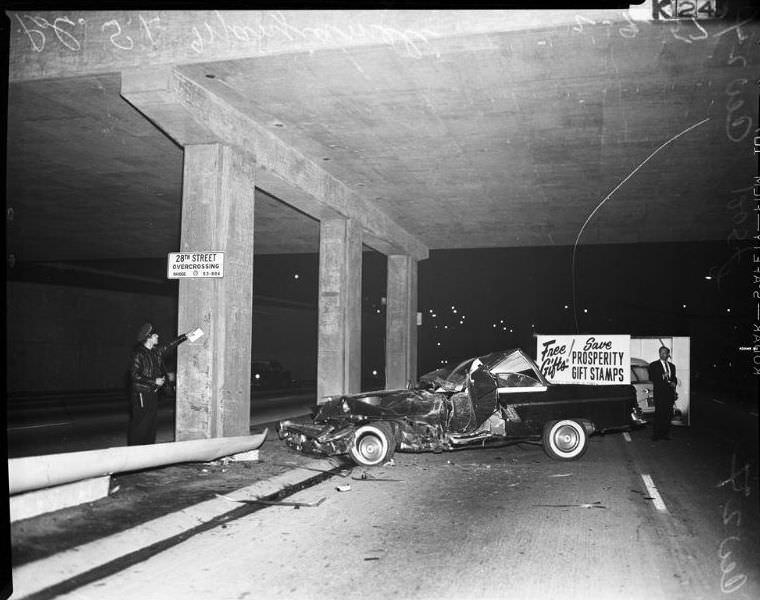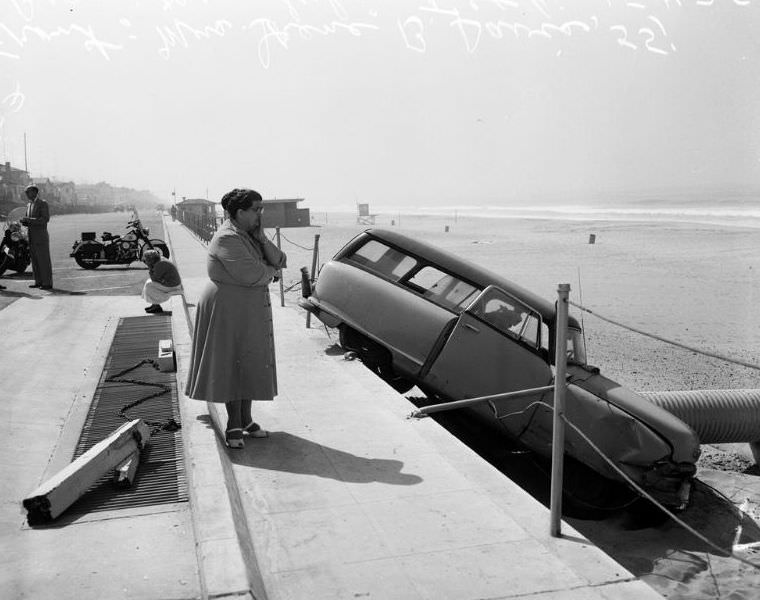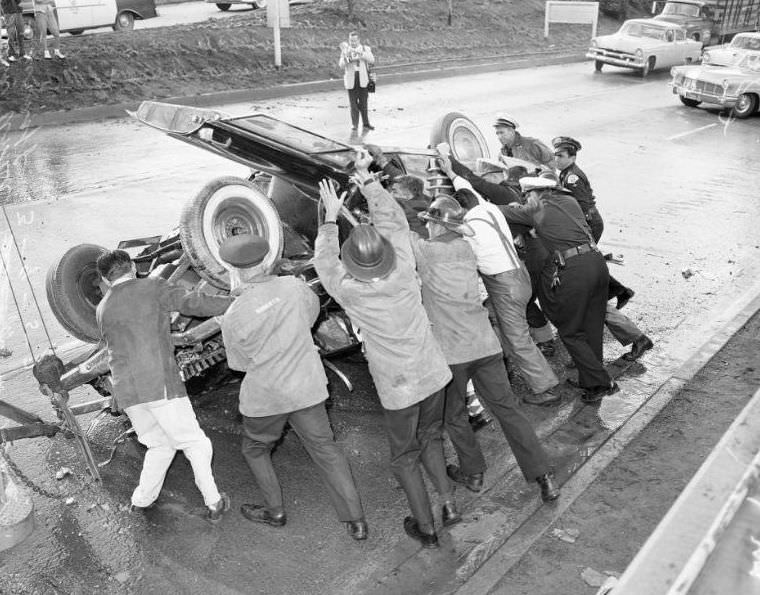California in the 1950s was a place rapidly changing, with more people moving in and more cars hitting the roads than ever before. Automobiles became central to life in the Golden State, connecting its sprawling cities and scenic destinations. This rise in car ownership and travel also meant an increase in traffic accidents across the state.
Cars of the 1950s looked stylish with their chrome and tail fins, but they lacked basic safety features common today. There were no seat belts installed from the factory in most cars. Dashboards were often made of hard metal, and steering wheels were solid columns pointed towards the driver. Doors were less likely to stay closed in a collision. Safety glass was not standard in all windows, leading to dangerous shattered pieces during a crash.
California’s road network was expanding rapidly in the 1950s, with new highways being built as part of a growing national system. However, these roads were still less developed than modern freeways. Entrance and exit ramps were shorter and less safe. Shoulders might be narrow or non-existent. Traffic engineering was not as advanced, and signs and road markings were not as clear or standardized everywhere. Speeds were increasing as cars became more powerful.
Read more
When traffic accidents happened in California during the 1950s, the results could be severe due to the design of the vehicles and the roads. Crashes often involved heavy metal impacting heavy metal with little to absorb the energy. People inside the cars were vulnerable to serious injury from striking hard surfaces or being ejected from the vehicle. Even accidents at moderate speeds posed significant risks.
Responding to these accidents presented different challenges than today. Emergency medical services were not as organized or quick to arrive on the scene across vast areas of California. Ambulances were fewer in number, and the training of first responders was less standardized. Getting injured people to hospitals took more time, especially in less populated or rural areas.
Police officers were often the first to arrive at an accident scene. They managed traffic, assessed the situation, and helped organize the removal of damaged vehicles. Clearing a wreck from a busy highway or road could cause significant delays, as specialized tow trucks and equipment were not always readily available.
